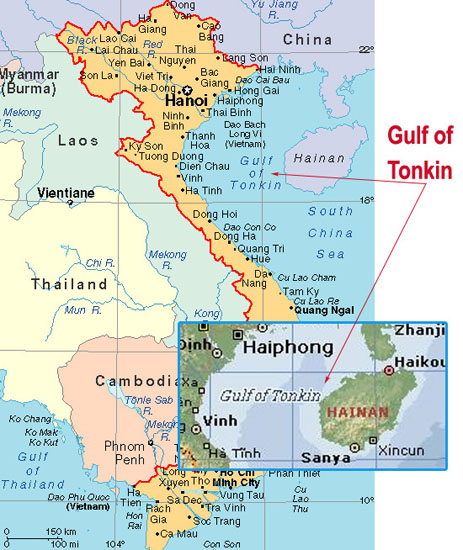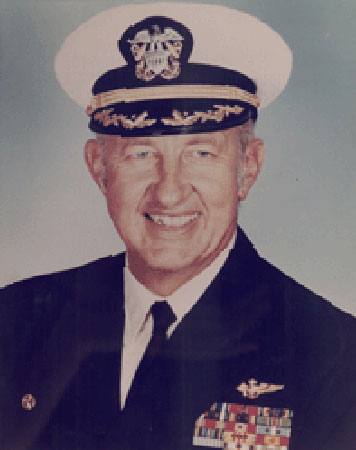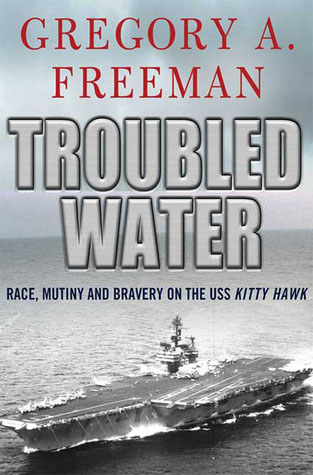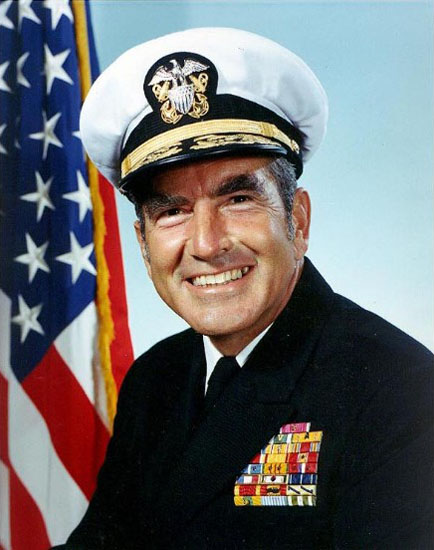Race Riot at Sea
Hugh Kennedy, American Renaissance, March 12, 2015
Gregory A. Freeman, Troubled Water: Race, Mutiny, and Bravery on the USS Kitty Hawk, Palgrave MacMillan, 2009, 246 pages, $27.00 (hardcover), $9.99 (Kindle).
On the night of October 12, 1972, the aircraft carrier U.S.S. Kitty Hawk was steaming from Subic Bay in the Philippines to its combat station in the Tonkin Gulf. The ship’s complement consisted of 4,483 sailors, aircrew, and Marines, 302 of whom were black.
By the early morning of October 13, the ship had endured a sustained race riot that some consider to be the first and only mutiny in the history of the United States Navy.
As Gregory A. Freeman and the crewmen he interviewed tell the story, the Kitty Hawk riot had been brewing for some time. Many of the crew, black and white, were showing the stress of repeated deployments and long combat duty shifts on a hot, crowded warship. Black crewmembers had been allowed to live together in areas that became squalid, where white sailors feared to go and that NCOs did not inspect.
A fresh blow to morale was the cancellation of an anticipated return to San Diego. (A disgruntled white sailor on Ranger, which was supposed to relieve Kitty Hawk, had deliberately thrown a steel rod into a main reduction gear, and the damage required a major overhaul.) Disenchantment with the Vietnam War was common among the enlisted men and was shared by some of the officers. To these woes was added a growing resentment among black sailors at perceived ill-treatment by their white shipmates, the Navy, and American society in general.
Racial tensions had flared after black-white bar fights while the crew was ashore on liberty in Subic Bay. By the time the carrier left for the Tonkin Gulf, many black crewmen were on a hair trigger.
The violence broke out about 8:00 P.M. on the 12th after what would ordinarily have been a minor incident. A black sailor going through the chow line asked for a second sandwich and a white mess attendant refused. The black sailor took a second sandwich anyway, and words were exchanged. A group of angry blacks then went looking for whites to attack. Their first victim, a slightly-built cook, was bludgeoned with a hose nozzle and thrown down a flight of stairs.
From then until 2:30 the following morning, rampaging black sailors used improvised weapons to beat and terrorize any whites they met. Bewildered crewmen were jumped in narrow passageways and besieged in berthing compartments. Medics trying to treat the injured had to fend off repeated attacks on the sick bay.
Most of the victims were assaulted at random and without provocation, but the mess attendant who had refused the second sandwich, James Radford, was found sitting on a couch and given an impromptu trial before a gang of black sailors:
The judge looked at Radford, waiting for his explanation, but he wasn’t offering one.
‘Hang him,’ the judge said calmly.
With that command, the crowd went wild. They pushed him over a table onto his back. He felt more punches and blows to his body, head, face, everywhere, as he was tossed about the room, off the table, onto the couch, all the while just trying to cover his head with his hands to block the worst of the blows. His efforts were futile. He felt the foam fog nozzle make solid contact with his head and the world started fading out. He felt blood all over him as he got lightheaded.
. . .
They tossed him out in the passageway and told him to find his own way to sick bay.
Radford lay there, bleeding and nearly unconscious, his cheek-bone smashed, his jaw broken, his skull cracked open, a huge gash over one eye. His punishment for not serving a black sailor in the mess deck.
The savagery of the riot was matched by the confusion of the response. The captain, Marland Townsend, was sleeping, and Executive Officer Benjamin Cloud was watching a movie when the commotion began; it was nearly 10:00 P.M. before they were informed of a disturbance in the aft mess deck, where rioters were throwing chairs and assaulting the few white mess cooks who hadn’t managed to escape. By that time, a detail from the ship’s Marine contingent already was on its way to the scene.
The captain and the executive officer responded independently and sometimes at cross purposes. Captain Townsend first went to the bridge and ordered guards posted to the flight deck and hangar bay (protection of the carrier’s aircraft was his first concern), then left his post to investigate the riot himself. His absence and failure to communicate with the bridge eventually caused panicked rumors that he had been captured or killed. Commander Cloud, in the meantime, rushed from hot spot to hot spot and had only sporadic contact with the captain.
At one point, Commander Cloud, frightened by the rumors of the captain’s death, declared an emergency over the ship’s public address system and ordered the “black brothers” and the Marines to go to separate ends of the ship. The captain, who had been roaming the hangar deck alone in search of damage to aircraft, made his way to the damage control center where he used the public address system to countermand Commander Cloud’s announcement. Even crewmen who had been unaware of the riot now knew that the ship was in trouble. The effect on the rioters, who were emboldened to learn that their actions had thrown the command structure into chaos, was the opposite of what Commander Cloud had intended.
The ship had the means to quell the riot but not the will to use them. The Kitty Hawk’s Marines were ready and able to wade into the mob and crack heads with night sticks, but both the executive officer and the captain kept them on a short leash and opted for negotiation.
Commander Cloud, a black officer who only recently had joined the ship, tried to win the rioters over with appeals to racial solidarity. At one point, the captain stumbled upon a bizarre scene that proved typical of Commander Cloud’s approach to the crisis:
Townsend had walked in as Cloud was trying to assure the rioters that he could be trusted, that he really was a true black man. Cloud would later admit that his methodology was unorthodox and not very military in nature, but at the time he felt military discipline had already been lost.
‘For the first time,’ Cloud told the men, ‘you have a brother who is an executive officer. My door is always open.’
Townsend was surprised to hear Cloud talk that way, identifying himself as a ‘brother’ and being so conciliatory to a bunch of hooligans running wild on his ship. And then it got worse. The men continued talking and Townsend could hear some of the sailors shouting ‘Right on!’ and ‘We can trust this brother.’ Several of the men raised their fists in a black power salute and stared directly into Cloud’s eyes, waiting for him to return the gesture, to show that he really was a black man.
Cloud didn’t know what to do. He had never given a black power salute in his life. It just wasn’t his style, no matter how proud he was of his heritage. Feeling that he couldn’t let this moment slip away, that he needed to take advantage of the headway he was making with these guys, for the first time in his life Cloud raised his clenched fist in a black power salute. The sailors cried out ‘Black power!’ and cheered the XO as a brother.
Townsend was not pleased. No one had acknowledged his presence, and now his XO was giving a black power salute with the rioters. What the hell was this?
Commander Cloud would try the racial solidarity card again when he faced 150 black sailors milling angrily in the forecastle. By then it was 12:15 A.M., scores of sailors were injured, and the crisis showed no sign of abating. Although his appeasement of the rioters would be criticized in hindsight, there can be no question that Cloud acted with sincerity and great courage:
‘If you doubt for one moment that I understand your problems, if you doubt for one moment that I am a sincere black man . . .’ His voice trailed off. He looked over the crowd, making eye contact with several men. He could see the contempt in their eyes, the way they looked at him with disgust and skepticism.
With a sudden burst of resolve, Cloud reached down to a man standing in front of him and took his weapon, a heavy piece of steel about two feet long. With the weapon in hand, Cloud tore off his uniform shirt and tossed it away. He stood bare-chested before the crowd and thumped his chest hard with a fist as he looked at the other men fiercely. Fury and determination in his voice, he raised the weapon high and shouted.
‘The first man in this crowd that for one moment does not believe my sincerity, I hold this weapon and I bare my back for you to take this weapon and beat me into submission, right here!’
Commander Cloud’s challenge broke the murderous tension in the room. From 1:30 to 2:30, while Commander Cloud mingled with the mob and listened to their grievances, other rioters were persuaded to give stretcher bearers free passage to the sick bay. The riot was over, but 47 men had been hurt and three had to be evacuated for treatment at onshore hospitals. Remarkably, flight operations resumed later that morning, on schedule.
In the riot’s immediate aftermath, the Navy urged Captain Townsend to conduct courts-martial before the ship returned to San Diego. This became typical of what Captain Townsend viewed as the Navy’s effort to keep the incident quiet. He refused, on the ground that he would be “railroading” the accused if he convened summary shipboard proceedings with only Navy attorneys to conduct the defense, and that this could even start another riot. Twenty-nine sailors–all but three of them black–eventually were charged with crimes under the Uniform Code of Military Justice, and 19 were found guilty of at least one charge.
Captain Townsend and Commander Cloud believed, with apparent reason, that the mayhem of October 1972 sidetracked their careers. Captain Townsend never received the promotion to Admiral that normally would have followed his prestigious command, and Commander Cloud ended his career onshore, retiring at the rank of ctaptain.
Mr. Freeman’s book is based heavily on interviews with officers and crew, including Captain Townsend and Commander Cloud. Many of those interviewed thought the Navy had downplayed the seriousness of the incident, and if anyone doubts that the Kitty Hawk incident was a racially-motivated mutiny that risked disabling a great ship during combat operations, Troubled Water should put those doubts to rest.
U.S. Congress, Racial Incidents Onboard USS Kitty Hawk (CVA-63) and USS Constellation (CVA-64), 92nd Cong., 2d Sess., 1973, House Armed Services Committee 92-81, Government Printing Office, 1973, $5.99 (paperback), $1.99 (Kindle).
For some remarkably undeceived conclusions about racial unrest in the Vietnam-era Navy, we can turn to a congressional report that explores the Kitty Hawk incident and a racially-motivated strike that took place the following month by crewmen of the carrier U.S.S. Constellation. (The Constellation was on a training exercise off San Diego when a number of crewmen, mostly black, staged a “sit-in” protest and threatened to throw the captain overboard. The dissident sailors were returned to shore, where Naval authorities negotiated with them, acceded to some of their demands, and meted out what the congressional report considered token punishments.)
The report was issued after hearings by a special subcommittee of the House Armed Services Committee, which accumulated 2,565 pages of testimony from 56 witnesses, including 30 members of both ships’ crews. Enlisted personnel facing court-martial charges had declined to testify, and the subcommittee chose not to compel their attendance.
Besides finding that the Navy was unprepared to deal with shipboard violence and unrest, the subcommittee had harsh words for the general state of good order and discipline in the Vietnam-era Navy, including the permissive atmosphere encouraged by Chief of Naval Operations Admiral Elmo Zumwalt, Jr. In the subcommittee’s view, the higher ranks of the service had undermined the efforts of commissioned and non-commissioned officers to enforce traditional standards of appearance and conduct, leaving the Navy’s “middle management” ill-equipped to deal with drug use, sabotage and general laxity.
None of this will surprise anyone who served in the military in the later stages of the Vietnam conflict. What is downright startling, however, is the report’s diagnosis of the state of race relations in the Navy. Unlike contemporary politicians’ credulity in the face of every conceivable black complaint, the subcommittee found the rioters’ and strikers’ racial grievances to be largely illusory:
During the course of the investigation we found no substantial evidence of racial discrimination upon which we could place true responsibility for causation of these serious disturbances. Certainly there were many perceptions of discrimination by young blacks, who, because of their sensitivity to real or fancied oppression, often enlist with a ‘chip on their shoulder.’ Those young blacks, who enter the service from the ghetto with a complete black awareness, probably for the first time find themselves immersed in a predominantly white society which, in civilian life, they had come to mistrust. These young men are subject to being easily led–as was the case in the Constellation uprising where about 15 agitators orchestrated the entire affair. [emphasis in the original]
If there was no real discrimination against black Navy personnel, why was there a perception of discrimination? Among other factors, the report cited the recruitment of sailors who failed to meet normal standards for mental aptitude and criminal record:
The Navy’s recruitment program for most of 1972 that resulted in the lowering of standards for enlistment, accepting a greater percentage of mental category IV and those in the lower half of category III, not requiring recruits in these categories to have completed their high school education, and accepting these people without sufficient analysis of their previous offense records, has created many of the problems the Navy is experiencing today.
In the subcommittee’s view, black sailors from the lower end of the recruiting pool faced no realistic prospect of specialized training and advancement, and often blamed their failure to progress on racism. The report attributed the trouble on the Kitty Hawk directly to this mentality:
The subcommittee is of the position that the riot on Kitty Hawk consisted of unprovoked assaults by a very few men, most of whom were of below-average mental capacity, most of whom had been aboard for less than one year, and all of whom were black. This group, as a whole, acted as ‘thugs,’ which raises doubt as to whether they should ever have been accepted into military service in the first place.
Those of us who do not serve in today’s military cannot assess the extent to which the problems of the Vietnam era persist in 2015. What seems certain, though, is that no report from today’s Congress would produce a diagnosis of those problems as frank as that of the subcommittee report of 1973.



















